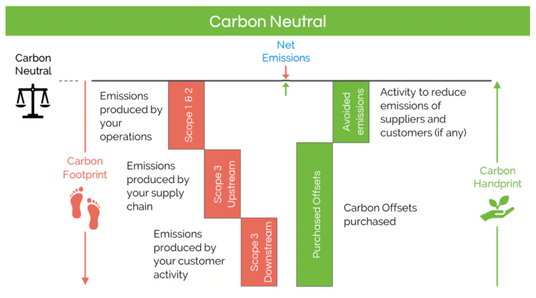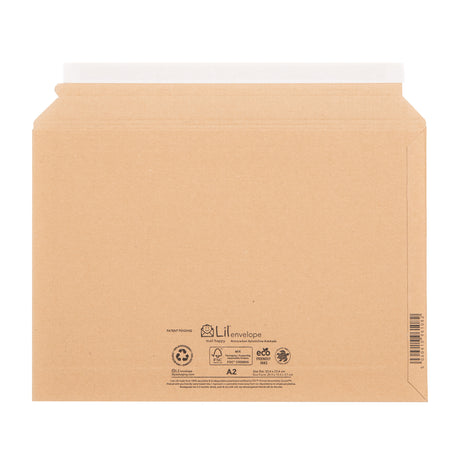Carbon Neutral Ecommerce Packaging

What Does This Mean?
We are committed to calculating and reducing our impact on climate change year-on-year (our greenhouse gas emissions) in line with the goal of limiting global warming to 1.5°C.
We include all relevant categories of emissions in our calculation and reduction plans, including the impacts of our supply-chain and products and services. Our emissions have been calculated, using the GHG Corporate and Value Chain Protocol Standards, and our targets set, in line with the SBTI guidelines, with the independent guidance of Go Climate Positive.

Net Emissions
The greenhouse gases we had not yet been able to reduce in the year reported were offset by purchasing carbon credits that helped pay for carbon reduction projects around the world. The carbon credits were independently verified by the Gold Standard® and were properly retired to ensure that no-one else can use them. This is the basis of our “Carbon Neutral” claim.
We only create Plastic Free Packaging.

Carbon Footprint
Our Carbon Footprint represents the current impact we have on global warming and climate change.
It is measured in "tonnes of carbon dioxide equivalent" because it represents the combined effect of all the greenhouse gasses emitted by all our activities.

Carbon Handprint
Our Carbon Handprint represents the total carbon savings that we have helped someone else to make, beyond the reductions we have made in our own emissions.
This may be from work we have done directly we with our suppliers, customers and others to help them reduce or prevent emissions or it may be from our investments in local or global projects designed to reduce or prevent greenhouse gas emissions or to remove greenhouse gases from the atmosphere.
Carbon Intensity
-
![]()
Our Carbon Intensity is a measure of much carbon we produce per unit of activity. We can use this to compare our emissions with other organisations in our industry sector.
Carbon Footprint breakdown by scope
-
![]()
Following the requirements of the “Greenhouse Gas Protocol”, we breakdown our carbon footprint into 3 "scopes" depending on where our emissions originate.
"Scope 1" contains the emissions that arise from our own operations and that occur within our facilities and vehicles.
"Scope 2" contains the emissions that arise from our use of energy for own operations but that occur outside our facilities(e.g., the electricity we purchase).
"Scope 3" contains the emissions in our supply chain and customer activity. We have included all the scope 3 categories that are significant for our organisation. Please see the “Emissions categories included” section of this page to find out which ones these are.* Our Scope 3 is offset with Carbon Credits purchased from the UN.
Carbon Footprint History
-
![Lil Packaging graph showing Lil Packaging's carbon footprint history in 2023]()
The history chart shows how our emissions have changed year-by-year.
In the chart our carbon footprint, carbon handprint and net carbon footprint are all shown as bars, with the scale on the left-hand side. The emissions intensity of our carbon footprint is shown as a line, with the scale on the right-hand side.
We have commited to the following:
Targets
Targets
1. Reduce our emissions from Scope 1 Fuel use, Scope 2 Electricity and Scope 3 value chain by 21% by 2028 vs our baseline in 2022
2. Achieve Net Zero emissions by 2050 achieving a reduction of 90% vs 2022 and neutralising the emissions we cannot eliminate
Actions
Actions
1. Install free renewable EV charging on site for staff and visitors
2. Lobby the UK government to subsidise hydro electric renewable energy
3. Lobby Defra to create conversion factor for corrugated cardboard to reduce end of life emmissions
4. Encourage top 5 suppliers to get a Net Zero target in place
5. Share Net Zero 2040 vision with employees to gain engagement and encourage emission reduction
6. Reduce air freighting of finished products to US
7. Introduce bike to work scheme for employees
8. Create and implement green business travel and accommodation policy
9. Investigate alternative types of printing
10. Reduce downstream travel emissions by encouraging suppliers to use greener forms of transport




















